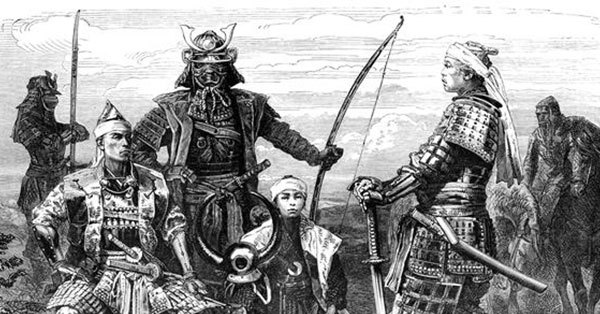In 1579 someone very strange journeyed to Japan and quickly became a national sensation. He came in the company of Jesuits and most believe that he came as their slave. Some say that he was a Makua from Mozambique. Others say that he came from Angola or Ethiopia. There are even a few that suggest he may not have even been African at all but rather a European born slave from Portugal.
He is known throughout history as Yasuke but this may not be his real name. There is evidence to suggest that Yasuke is just a Japanese version of his African name. Those who believe that he hailed from Mozambique believe that his name could have be Yasufe or Issufo. Those who believe that he came from the Habshi people of Ethiopia suggest that his name could have been Yiake or Isaque. Yasufe was also an Ethiopian surname at the time.

His early life is mostly a mystery. His birth likely occurred sometime between 1555 and 1566 but even that cannot be verified. Most of what is known about Yasuke before he came to Japan is conjecture and supposition because it was not until he started making waves with the Japanese people that he started to make his mark in history. There are reasons to believe that he could have come from Ethiopia since they were just starting to get contact with the Portuguese.
Mozambique on the other hand would not experience significant Portuguese presence until 1585 which is long after Yasuke would have left. The Makua of Mozambique were agrarian and not militant while the Habshi people were more like soldiers and therefore more in line with what is known about the strength and personality of Yasuke.
He came to Japan as the attendant to Alessandro Valignano, a Jesuit missionary. Several Jesuit missionaries traveled to Japan in order to visit the missions that had been set up throughout the island country. From the moment the Jesuits arrived in Japan, they attracted plenty of attention, or rather Yasuke attracted attention.
Never before had most of the people in the country seen someone with dark skin. While Yasuke and the Jesuits visited a church in Kyoto it was said that people would travel great distances for the chance to see him.
At one event the rush to see Yasuke was so great that people were crushed to death by the crowd trying to get a look at him. The Jesuits began fearing that their church and any other places they might visit would be destroyed by the throngs of people constantly trying to get a look at the African visitor.
All the excitement surrounding the visitor drew the attention of the warlord Oda Nobunaga. He requested an audience with Yasuke, and being that he was one of the most powerful men in Japan, his request was granted.

Nobunaga found the dark skin of Yasuke to be unbelievable and demanded proof that it was truly his skin and not ink. He made Yasuke take off his shirt and then he rubbed at the skin to see if the ink would come off. Once he was satisfied, Nobunaga became as fascinated with Yasuke as the rest of Japan was. It was even said that Nobunaga was the one to grant the African the name of Yasuke. There are several historical records from the period that detail this first meeting between Nobunaga and Yasuke.
It was not long after this that Yasuke entered into the service of Lord Nobunaga. The method of Yasuke’s transfer from the Jesuits to Nobunaga is unclear. While Japanese accounts suggest that Yasuke was presented to Nobunaga the European accounts make no mention of presenting Yasuke to Nobunaga.
It is possible that the Jesuits wanted to spare their church from the onslaught of people and passed off Yasuke. It is also possible that the powerful and deadly warlord insisted on taking Yasuke from the peaceful Jesuits.
What happened next cemented Yasuke’s place in the history books.

